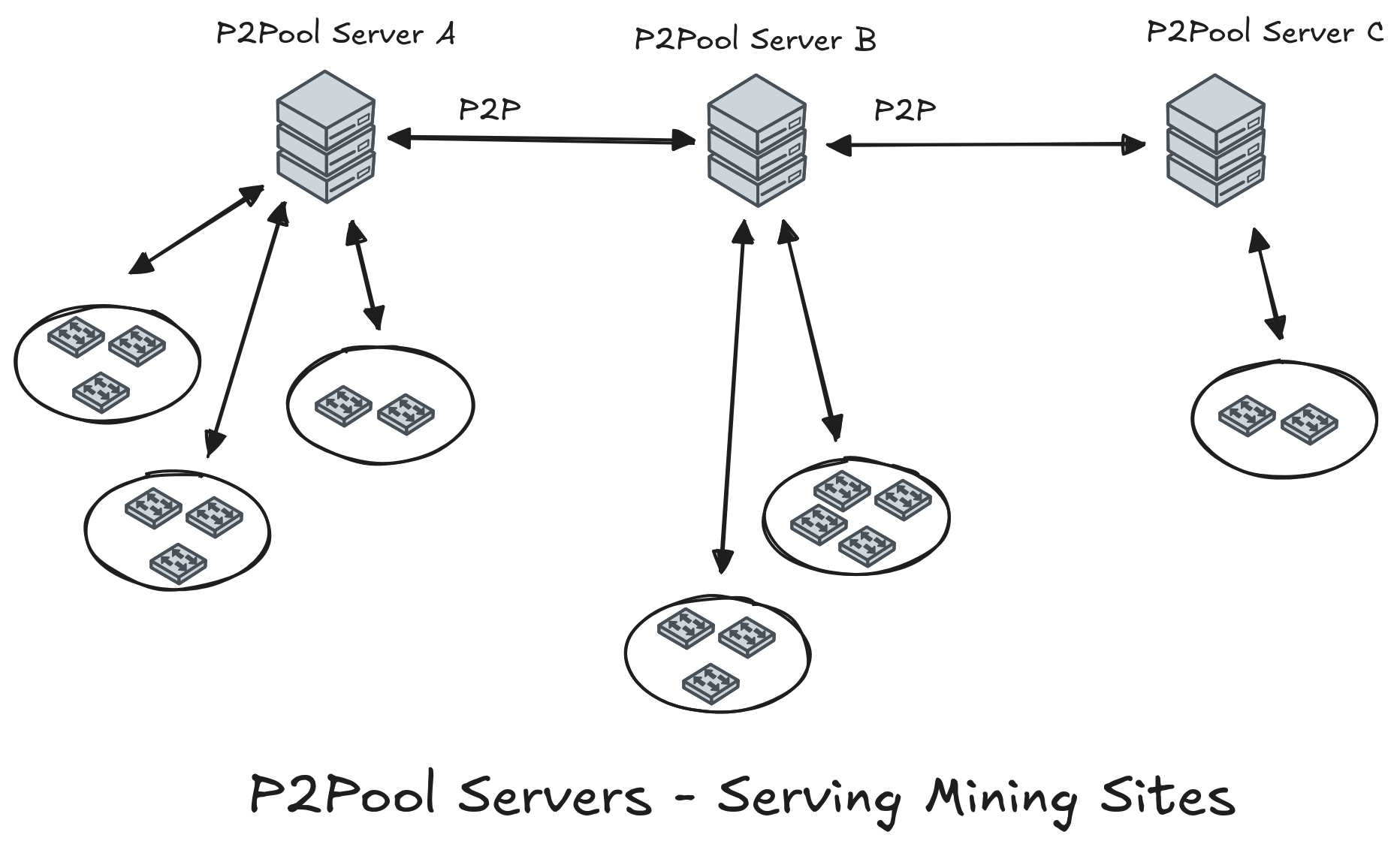Trusting the Trustless: How Public P2Pool Nodes Worked for Bitcoin Miners
In the early days of Bitcoin mining, P2Pool emerged as a decentralized mining pool protocol, allowing miners to collaborate without relying on a central authority. But as the network grew, so did the need for more accessible solutions. The community started to use P2Pool server nodes. In this post I look into why some miners found the solution acceptable. The post is motivated by the question - should P2Poolv2 support such server nodes?
Here’s an image of how the setup looked in the past.

The Mechanics Behind Public P2Pool Nodes
P2Pool operated by creating a separate blockchain, known as the “sharechain,” where miners submit shares that collectively contribute to finding a valid Bitcoin block. Each node maintained this sharechain, ensuring transparency and decentralization.
Public P2Pool nodes took this a step further by allowing miners to connect their ASICs directly to these nodes via the Stratum protocol. These nodes handled the heavy lifting: maintaining the sharechain, aggregating shares, constructing valid blocks, and broadcasting them to the Bitcoin network.
The Trust Dynamics
While P2Pool’s design minimized trust requirements, connecting to a public node introduced certain dependencies:
-
Reliability: Miners depended on the node operator’s infrastructure. Downtime or misconfigurations could lead to missed rewards.
-
Accurate Share Tracking: Operators needed to ensure that all valid shares were correctly propagated and recorded.
However, it’s crucial to note what miners didn’t have to trust:
-
Fund Custody: Payouts were made directly to miners’ Bitcoin addresses via the coinbase transaction. There was no intermediary holding the funds.
-
Reward Distribution: The P2Pool protocol’s PPLNS (Pay-Per-Last-N-Shares) model ensured fair distribution based on contributed work, reducing the potential for operator manipulation.
Why Did Miners Opt for Public Servers?
Running a P2Pool node required technical expertise and resources. Not all miners had the capability or desire to manage their own nodes. Public nodes offered a plug-and-play solution, allowing miners to participate in decentralized mining without the overhead.
Conclusion
Public P2Pool servers bridged the gap between full decentralization and user accessibility. They allowed miners to benefit from P2Pool’s trustless design while outsourcing the operational complexities. While they introduced some dependencies, the core principles of decentralization and direct payouts remained intact.
I am leaning towards providing such a setup for P2Poolv2 as well. Well, let’s put it another way, if someone makes such a change and submits a patch, we’ll probably accept it the change.